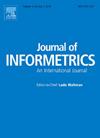利用语义偏差揭示中美人工智能研究差异
IF 3.5
2区 管理学
Q2 COMPUTER SCIENCE, INTERDISCIPLINARY APPLICATIONS
引用次数: 0
摘要
中国和美国被公认为人工智能(AI)研究的领先力量,在各自的社区内具有不同的研究倾向。了解中美两国的研究差异,对于把握全球人工智能格局,特别是揭示其协作分工和竞争态势至关重要。本文超越了依赖于频率统计和主题分析的传统方法,引入了一种强调语义偏差的创新方法,这有助于区分两个国家对给定研究概念的研究偏好的细节。我们构建了一个包含研究尺度和语义偏差两个维度的矩阵,将每个研究概念定位为四个领域,包括差异研究、兴趣变化研究、共识研究和尺度差距研究。在此基础上,我们进行共词网络分析,在宏观层面探讨中美两国的研究差异,并利用语义场分析,在微观层面以“人脸识别”为例进一步探讨其细节。我们发现,在中美两国的AI研究中,超过90%的领域实体的研究规模差异不显著,但37.5%的实体存在明显的语义偏差。代表热门研究问题的高频实体也显示了相同的结果。我们的研究结果表明,两国的人工智能研究人员对绝大多数领域概念的关注程度相对一致,但就所进行的研究而言,两国在内容偏好方面仍存在显著差异。我们的框架能够全面考察不同类型的研究差异,为中美两国在人工智能领域的独特研究概况和竞争优势提供有价值的见解本文章由计算机程序翻译,如有差异,请以英文原文为准。
Revealing the research differences of AI between China and the U.S using semantic deviation
China and the United States are recognized as leading forces in Artificial Intelligence (AI) research, with distinct research inclinations within their communities. Understanding the research differences between these two nations is crucial for grasping the global AI landscape, especially for revealing its collaborative division of labor and competitive situation. This paper moves beyond traditional methods reliant on frequency statistics and topic analysis by introducing an innovative approach that highlights the semantic deviation, which can help differentiate the details of research preference of a given research concept in two countries. We construct a matrix that includes two dimensions: research scale and semantic deviation, positioning each research concept into four areas including Discrepant Research, Interest-Vary Research, Consensus Research and Scale-Gap Research. Based on which, we conducted co-word network analysis to explore the research differences of China and U.S. on macro level, and utilized semantic field analysis to further explore its details in the case of “Face Recognition” at micro level. We found that in AI research between China and the U.S., the research scale difference is not significant for over 90 % of all domain entities, but 37.5 % of entities show a clear semantic deviation. The high-frequency entities that represent popular research issues also show the same results. Our findings indicate that AI researchers from both countries have a relatively consistent level of attention to the vast majority of domain concepts, yet there is still a significant difference in the content preferences between the two nations in terms of research being conducted. Our framework enables a thorough examination of research differences with various types, providing valuable insights into the distinctive research profiles and competition advantages in AI between China and U.S.
求助全文
通过发布文献求助,成功后即可免费获取论文全文。
去求助
来源期刊

Journal of Informetrics
Social Sciences-Library and Information Sciences
CiteScore
6.40
自引率
16.20%
发文量
95
期刊介绍:
Journal of Informetrics (JOI) publishes rigorous high-quality research on quantitative aspects of information science. The main focus of the journal is on topics in bibliometrics, scientometrics, webometrics, patentometrics, altmetrics and research evaluation. Contributions studying informetric problems using methods from other quantitative fields, such as mathematics, statistics, computer science, economics and econometrics, and network science, are especially encouraged. JOI publishes both theoretical and empirical work. In general, case studies, for instance a bibliometric analysis focusing on a specific research field or a specific country, are not considered suitable for publication in JOI, unless they contain innovative methodological elements.
 求助内容:
求助内容: 应助结果提醒方式:
应助结果提醒方式:


